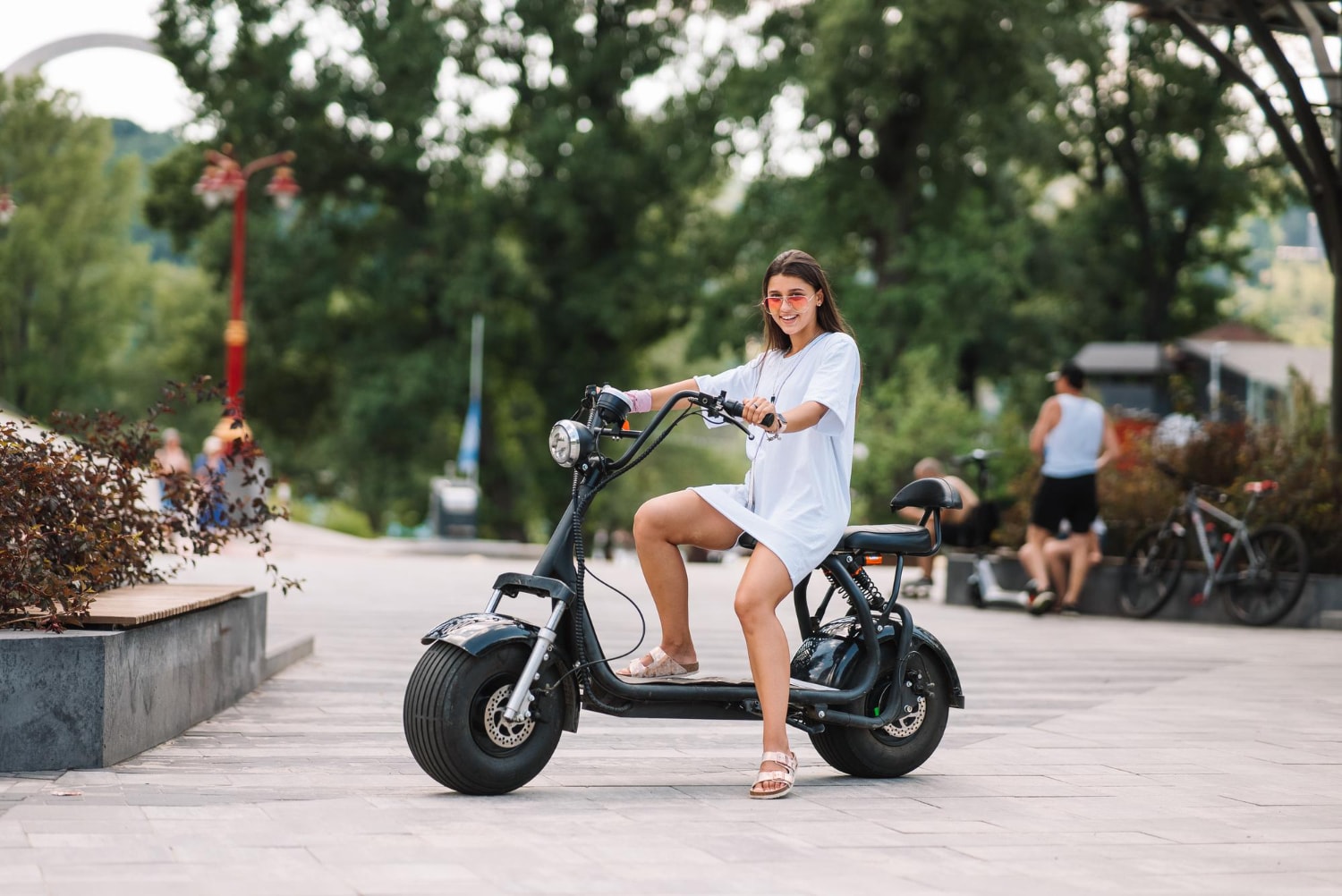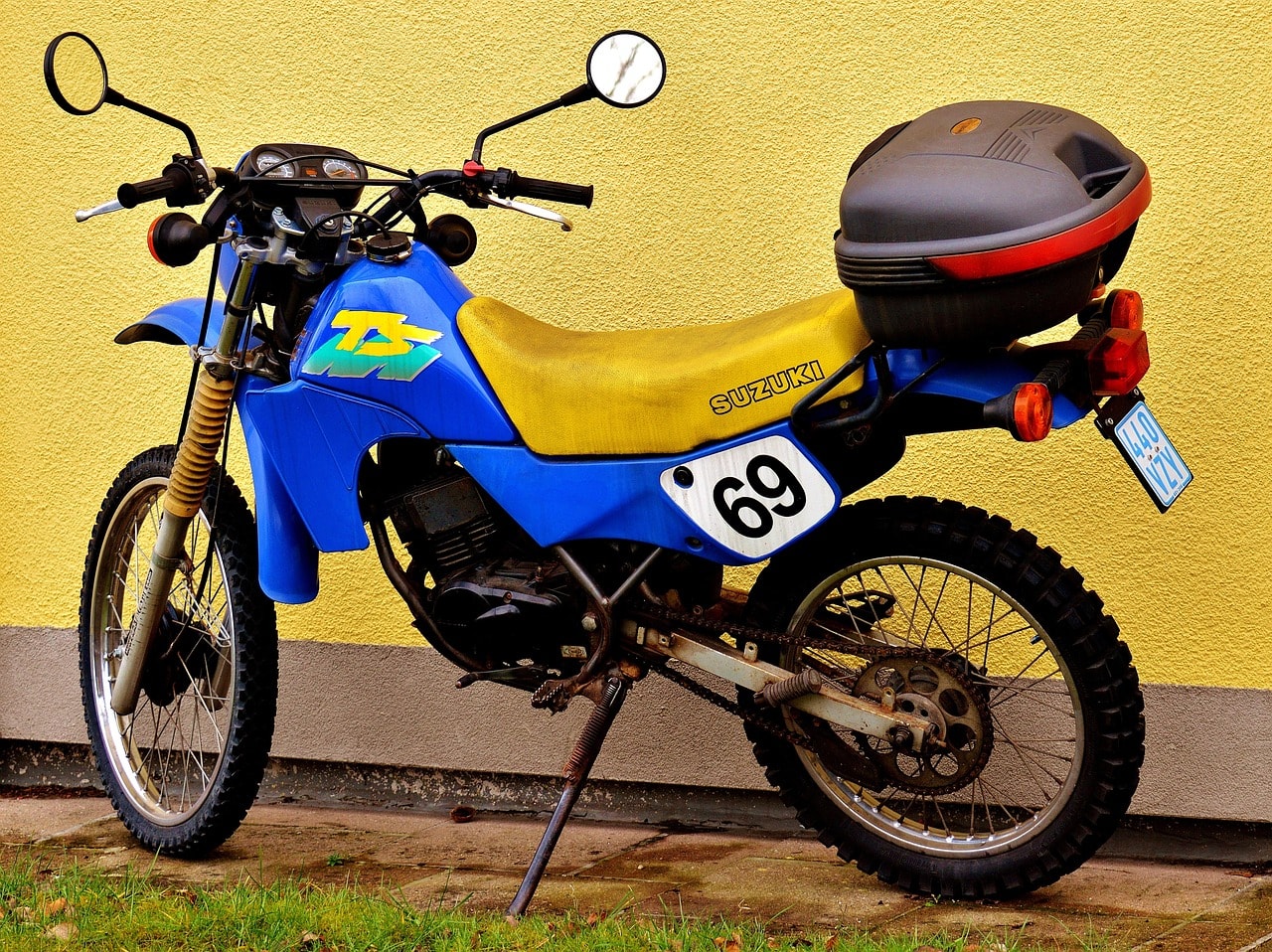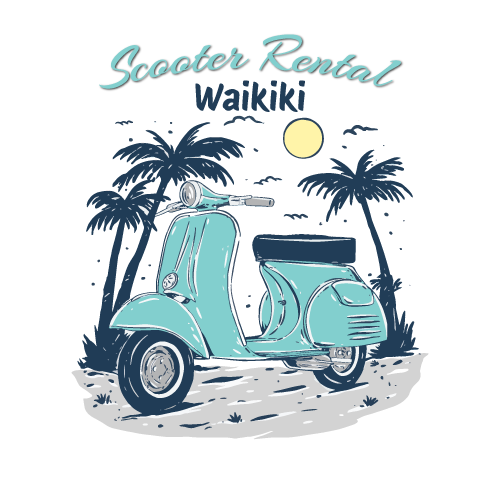If you’ve already decided to rent a moped in Waikiki, Hawaii, you’ve made the right choice. Whether thinking about purchasing or exploring mopeds, most riders will have this recurring question in mind: How fast will those small mopeds zipping around city streets actually go? In this guide, you can find the answer to that question, as I’ve written about everything that can affect the mobility and performance of mopeds, including tips to maximize your speed without compromising safety or breaking any laws.
How Fast is a Moped

Mopeds are a small kind of motorbike, but if you have the perception that they are slow-moving vehicles that can barely keep up with the walking pace of a normal human, then you’re wrong. While mopeds are not adventure bikes or racing machines, they’re faster than you might imagine. Yes, mopeds can keep up with cars on highways, while others are best designed for commuting within city streets, where speed may not be as important.
Mopeds are pretty popular for their compact size, frugal fuel consumption, and ease of use. What makes them fascinating is the different moped engine sizes, which significantly influence their speed and performance. Smaller engines, like 50cc, are generally more fuel-efficient, achieving over 100 mpg, while larger engines, such as 125cc and 150cc, consume more fuel but still maintain respectable efficiency rates. The normal top speed of mopeds generally ranges from 25 to 40 mph, depending on local regulations.
However, some high-performance mopeds or models with larger engines can reach speeds of up to 60 mph or even more. Driving around Waikiki town on a moped offers freedom, convenience, and that wind-in-your-hair sensation, all in one thrilling package.
What is the Maximum Speed of a Moped?
The maximum speed of a moped can vary widely based on several factors, including engine size, design, and local laws. Typically, mopeds with smaller engines, such as 50cc models, have a top speed of around 30-40 mph (48-64 kph). These are ideal for city commuting and short trips. On the other hand, mopeds with larger engines, like those with 100cc or more, can reach speeds of up to 60 mph (96 kph) or even higher. However, it’s crucial to remember that local laws and regulations may impose restrictions on the maximum speed of mopeds on certain roads or in specific areas. Always check the local laws to ensure you’re riding within legal limits and staying safe.
Factors Affecting Moped Speed

Here are the top factors that determine how fast your rented moped or an owned one can go: Moped engine sizes, measured in cubic centimeters (cc), significantly impact speed and performance, with smaller engines like 50cc being more fuel-efficient and larger engines offering more power and higher speeds. Understanding moped speeds in different riding scenarios is crucial, as various engine capacities – from 50cc to 150cc – influence the maximum speeds, making them suitable for city commuting or longer travels.
Engine size (CC) and Type
The engine size of a moped, measured in cubic centimeters, is one of the most significant determinants of a moped’s speed. Mopeds typically come with either two-stroke or four-stroke engines. Two-stroke engines often have smaller engine displacement and are designed to provide more power per stroke, potentially allowing for higher speeds compared to their four-stroke counterparts. Larger engine displacement generally equates to more power and higher top speeds.
Most 50cc scooters have a restricted engine that caps their top speed at 28 mph, emphasizing rider safety and compliance with licensing laws, particularly for younger riders.
Weight and Design
Lighter mopeds with streamlined designs tend to achieve higher speeds more effortlessly because they are easy to maneuver and encounter less resistance. They also boast better power-to-weight ratios. Usually, mopeds are well-manufactured in order to equally distribute the weight in the overall design, striking the right balance between stability and speed.
Here, we can consider rider weight as well, as heavier riders may experience lower top speeds.
Maintenance
If you’ve poorly maintained your moped scooter, it can lead to reduced performance and slower speeds. So you should always make sure to keep an eye out for crucial components such as the engine, brakes, tires, and chain to ensure they are all in good working condition.
You can perform regular maintenance tasks such as oil changes, keeping the air filter clean, and spark plug replacements. This can positively enhance the moped’s speed over time.
Road and Weather Conditions
If you’re riding on smoother and flat roads, it helps you increase the overall moped speed. Rough or hilly terrain, however, can hamper your ability to reach your moped’s maximum potential. Climbing uphill can be much slower while descending hills can result in higher speeds, so make sure to exercise caution and adhere to speed limits.
At the same time, weather conditions can also affect the speed of a moped. Wind and rain can affect moped speed and handling, as the rider will face resistance.
Modifications and Upgrades
Usually, moped enthusiasts often explore various upgrades and modifications to squeeze more speed out of their rides. Aftermarket parts like performance exhaust systems, carburetor upgrades, and high-flow air filters can provide additional power, resulting in increased top speeds.
Moped Speed Comparison
| Moped type | Top speed |
|---|---|
| 50cc | 30 mph |
| 60 cc | 35-40 mph |
| 80cc | 50 mph |
| 100cc | 40-70 mph |
| 125cc | 60 mph |
| 150cc | 70 mph |
| Electric mopeds | 59 mph |
It’s important to understand local laws regarding the legal speed limit for mopeds. Performance can be restricted by law, and adhering to traffic regulations is crucial for safety.
Complying with Local Laws and Regulations

When it comes to operating a moped, adhering to local laws and regulations is paramount. These laws can vary significantly from one place to another, so it’s essential to familiarize yourself with the specific requirements in your area. For instance, some states mandate a motorcycle license for operating a moped with an engine size over 50cc, while others may only require a valid driver’s license. Additionally, speed limits for mopeds can differ, with some areas imposing stricter limits than others. Ensuring you comply with these regulations not only keeps you legal but also enhances your safety on the road.
Understanding Local Laws and Speed Limits
Local laws and speed limits are critical factors in determining how fast you can legally ride your moped. In some regions, mopeds may be restricted to slower speeds, such as 25-30 mph (40-48 kph), particularly in densely populated urban areas. Conversely, other areas may permit mopeds to reach highway speeds, allowing for faster travel. Understanding the specific speed limits and regulations in your locality is essential for safe and legal moped operation. Always stay informed about the local laws to avoid fines and ensure a smooth riding experience.
Engine Size and Top Speed
We already know the term cc stands for cubic centimeters and is used to measure moped engine sizes, which directly impact the power output and speed of a moped.
The Speed of 50cc Mopeds
50cc mopeds are considered perfect for beginner rides. They have the smallest engine capacities available in mopeds today. On a good day with flat roads and no significant headwind, cyclists may reach speeds of 30 to 35 mph. They’re more fuel-efficient and will help you wander through the city, handle short commutes, and reach your destination on time. These mopeds are the most preferred vehicles in dense urban environments, where maneuverability is more important than speed. Steep hills can quickly reduce your speed to 20 mph or less, prompting you to wish you had more horsepower under the hood.
60cc Mopeds
A 60cc moped is for people who want a bit more speed than a 50cc but also prefer lightweight bikes with easy handling capabilities. On flat roads, you could reach speeds approaching 40 mph. An extra few miles may not seem like much, but they can make all the difference when keeping pace with city traffic. This vehicle is sufficient for your urban commutes and moderate hill drives. It has the extra push when needed, and the engine power is handy when driving with an extra person.
Comfort of 70cc Mopeds
The 70cc model offers the speed and versatility that people look for in an urban vehicle. At 45 mph, riders reach a point where they can comfortably ride on roads with faster-moving traffic. It’s a perfect choice for people who commute on city roads, trek into suburban areas, and whose routes consist of various roads, some fast and some slow. They are still agile enough for city streets yet no longer bound by them.
80cc mopeds go a bit faster than 70cc, with top speeds reaching closer to 50 mph. You can transport people efficiently and comfortably between destinations using these mopeds. Essentially, 70cc and 80cc mopeds are best for suburban commutes and versatile use.
90cc Mopeds
If your moped’s engine is 90cc and above, you enter the motorcycle category. These mopeds can reach speeds of 55 mph or faster, making them suitable for use on various roads, including some light highway traffic. A 90cc moped gives you a taste of motorcycle power without needing a motorcycle license in many locations. You can choose this moped for highway use and performance-focused riding while enjoying the convenience and efficiency of a moped.
100cc Mopeds
A 100cc moped marks where a moped and motorcycle become indistinguishable. It can reach speeds of up to 60 mph and is tailored for riders looking for something more than a commute within city limits.
What’s great about a 100cc moped is that it provides ample power for almost any situation. You don’t need to feel restricted by speed or terrain, as you can even venture onto highways if local laws allow!
125cc and 150cc Mopeds
When we look at mopeds with engine sizes of 125cc and 150cc, they represent the mainstays of moped culture. These mopeds can reach 70 mph or faster, making them suitable for highway driving and longer journeys. At this level, you’re effectively riding a motorcycle that is small for primary transportation and highway use.
Electric Mopeds
If you’re looking for a moped that is quiet, efficient, and surprisingly fast, let’s welcome electric mopeds to the scene. The electric motor plays a crucial role in the performance of electric mopeds, providing instant torque and enabling them to reach impressive speeds. Electric mopeds offer eco-conscious individuals a low-maintenance vehicle capable of offering serious performance. Electric moped’s speed may vary significantly depending on their model, reaching 30mph on more basic versions and 60+ mph on high-performance models. What’s so intriguing about electric mopeds is their instant torque, which enables them to get up and running more quickly than you might anticipate. Electric mopeds are a great option for those who want a moped that can keep up with the demands of more serious riding.
Safety Considerations

Once you get caught up in the thrill of speed, there’s a slight chance that it can be easy to lose control when going faster. So it’s important to talk about safety considerations. You need to practice greater control when there is greater force required. As your speed increases, maintaining full control of your moped becomes increasingly essential when navigating traffic or abrupt changes on the road. Additionally, having a valid driver’s license is crucial for riding a moped, as licensing requirements can differ by location.
At higher speeds, your braking distance increases significantly. As such, you will need to plan and allow more time for yourself to slow down. You need to know that understanding the delicate balance between speed and control is key. At 30 mph, a moped may feel agile and responsive; at 60 mph, however, its handling could become less stable. It’s also important to consider the necessity of motorcycle insurance for moped riders to ensure you are covered in case of an accident.
Always wear protective gear, including a helmet, and ensure your vehicle is roadworthy and properly maintained. Consider road conditions as Slick roads, gravel surfaces, and other obstacles become even more hazardous at higher speeds. Riding at the maximum speed range on your moped may be exciting but not worth the risk if it jeopardizes safety.
Balancing Speed and Control
As exhilarating as it may be to ride your moped at higher speeds, it’s crucial to balance speed with control. As your speed increases, so does your braking distance, and the handling characteristics of your moped can change. Always plan ahead, allowing plenty of time to slow down and maintain control of your vehicle. Remember, speed is just one aspect of safe riding; maintaining control and being aware of your surroundings are equally important. By balancing speed and control, you can enjoy a thrilling yet safe moped riding experience.
Choosing the Right Vehicle
Selecting the right vehicle for your needs involves considering various factors, including your specific requirements and goals. If you’re looking for a simple, accessible vehicle for city trips, a 50cc moped might be the perfect choice. However, if you need a vehicle for longer distances or faster roads, a 100cc or larger moped or scooter might be more suitable. Electric mopeds and e-bikes offer a convenient, eco-friendly option, while motorcycles provide more power and versatility. Consider factors like engine size, fuel efficiency, and local laws when making your decision to ensure you choose the right vehicle for your lifestyle.
Conclusion
Mopeds are designed primarily for urban commuting. These vehicles offer an excellent solution for short-distance travel within cities and towns, where congested traffic and short trips are the norm. To answer your question, are mopeds pretty fast, it depends on the needs and goals you have in mind. Their top speeds typically range from 30 to 50 miles per hour, based on engine size and other variables. If you’re looking for something simple and accessible for city trips, a 50cc moped could be the answer.
Changing to a 70cc or 90cc model might be ideal if your rides involve longer distances on faster roads. At its core, the perfect moped will depend on what best suits your lifestyle and riding preferences. When selecting a moped that will provide maximum enjoyment and convenience on the road, take your time. Always prioritize safety and follow local laws and regulations regarding speed limits and motorcycle licenses.
FAQs
How fast can mopeds go?
The average standard moped typically has a top speed ranging between 30 to 40 miles per hour (48 to 64 km/h). However, certain models, especially higher-end ones, can achieve speeds of up to 60 mph (96 km/h).
Can mopeds go 50 mph?
Mopeds can be very slow moving compared to racing machines. Mopeds have several engines allowing them to move from 30 to 70 mph, according to their capacity.

